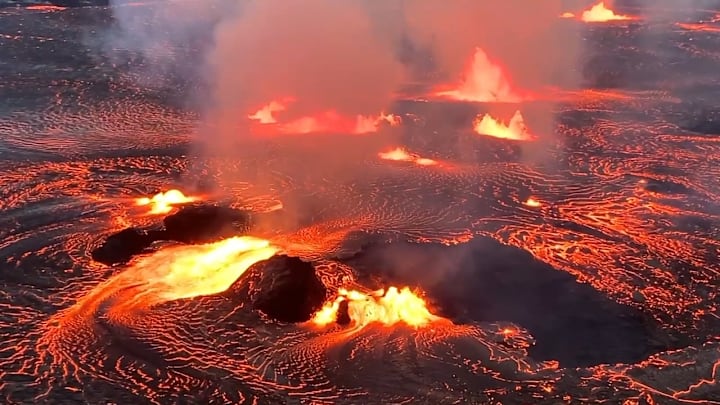The fiery spectacle of Kilauea Volcano has once again captured the world's attention as it resumes its explosive dance. According to the U.S. Geological Survey (USGS), the renowned volcano, nestled within Hawaii Volcanoes National Park on the Big Island, has sprung back to life with a vigorous eruption.
The eruption commenced in the wee hours of the morning, with lava dramatically spewing from the summit. The USGS swiftly raised the alert level to red, signifying the imminent or ongoing volcanic activity and its potential hazards.
The fissure, stretching over a mile, has unleashed molten lava reaching heights of up to 65 feet. Alongside the lava, gases are also being emitted, reminiscent of the volcano's last major eruption in 1974.
Kilauea Eruption from Volcano House in the National Park. Insane. pic.twitter.com/OH3X4zqxtc
— Jax (@JaxWaller1) June 3, 2024
While the eruption's duration remains uncertain, experts estimate it could persist for several hours to a couple of days. Located within a closed, rugged area of the national park, the eruption poses no immediate threat to nearby communities. Yet, officials are vigilant, closely monitoring the volcano for any shifts in activity.
Remarkably, no Pele's hair—a telltale sign of volcanic glass formation—has been observed at the eruption site thus far. Despite this, authorities remain cautious, recognizing the unpredictable nature of volcanic activity.
As of now, seismic activity and ground deformation beneath the East Rift Zone and Southwest Rift Zone remain minimal, with volcano activity concentrated primarily at the summit. This cautious optimism stems from past eruptions, where devastating lava flows wreaked havoc on surrounding areas, obliterating hundreds of properties in 2018 alone.
Recent research published in Nature Geosciences sheds light on the mechanics behind Kilauea's ferocity, likening its lava flow to a "stomp-rocket toy." This mechanism, identified as a contributing factor to the severity of the 2018 eruption, underscores the importance of ongoing research in understanding and mitigating the impacts of volcanic activity.
Got questions about history, trivia, facts or anything else?
Follow us on social media! Send us your questions, and we might answer them here on the site.
-@AskEverestFS
-Ask Everest
